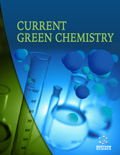Abstract
The modern world of chemistry needs to find a sustainable solution for the remediation of heavy metals. The method of solving heavy metal problems using abundant and easily available ways is an integral part of green chemistry. This approach stimulates innovation among scientists. These procedures increase performance and decrease the consumption of non-renewable resources, minimizing negative impacts on the environment and less use of harmful chemicals. In this review, we have included some natural ways for the remediation of heavy metals such as Biochar, Clay, Zeolites, and Microorganismbased methods. We have also incorporated the mechanism of action of each of these procedures for the betterment of the reader.
Keywords: Remediation of heavy metals, green chemistry, non-renewable resources, biochar, clay, zeolites.
[http://dx.doi.org/10.3390/ijerph18052227] [PMID: 33668228]
[http://dx.doi.org/10.3389/fpubh.2020.569353] [PMID: 33072704]
[http://dx.doi.org/10.1002/cssc.202000290] [PMID: 32357282]
[http://dx.doi.org/10.1016/j.arabjc.2010.07.019]
[http://dx.doi.org/10.1016/j.ccr.2015.01.001]
[http://dx.doi.org/10.1038/s41545-021-00127-0]
[http://dx.doi.org/10.1007/s11270-020-04863-w]
[http://dx.doi.org/10.1007/s13369-021-05525-7]
[http://dx.doi.org/10.1039/D0SC06204A] [PMID: 34164066]
[http://dx.doi.org/10.1002/9781119693635.ch15]
[http://dx.doi.org/10.3390/min9080487]
[http://dx.doi.org/10.2478/intox-2014-0009] [PMID: 26109881]
[http://dx.doi.org/10.1038/s41598-021-88843-y] [PMID: 33927316]
[http://dx.doi.org/10.1016/j.envadv.2022.100168]
[http://dx.doi.org/10.15171/jhp.2019.12]
[http://dx.doi.org/10.1155/2011/939161]
[http://dx.doi.org/10.1007/s44246-022-00007-3]
[http://dx.doi.org/10.22571/2526-4338242]
[http://dx.doi.org/10.21967/jbb.v4i1.180]
[http://dx.doi.org/10.1016/j.btre.2020.e00570] [PMID: 33304842]
[http://dx.doi.org/10.1007/s11356-013-1769-8] [PMID: 23649601]
[http://dx.doi.org/10.1016/j.scitotenv.2020.136894] [PMID: 32084677]
[http://dx.doi.org/10.1007/s13762-020-03060-w]
[http://dx.doi.org/10.1016/j.jenvman.2014.02.030] [PMID: 24768839]
[http://dx.doi.org/10.1016/j.chemosphere.2014.12.058] [PMID: 25618190]
[http://dx.doi.org/10.1016/j.chemosphere.2016.09.151] [PMID: 27743533]
[http://dx.doi.org/10.1016/j.eti.2020.100692]
[http://dx.doi.org/10.1007/s10311-018-0813-9]
[http://dx.doi.org/10.1016/S1002-0160(17)60310-2]
[http://dx.doi.org/10.15244/pjoes/112363]
[http://dx.doi.org/10.1016/j.jhazmat.2019.122005] [PMID: 31918052]
[http://dx.doi.org/10.1016/j.jhazmat.2019.03.010] [PMID: 30889465]
[http://dx.doi.org/10.1016/j.chemosphere.2019.125620] [PMID: 31869671]
[http://dx.doi.org/10.1089/ees.2015.0166]
[http://dx.doi.org/10.1016/j.jhazmat.2009.04.097] [PMID: 19464110]
[http://dx.doi.org/10.1016/j.micromeso.2011.03.024]
[http://dx.doi.org/10.1016/j.jcis.2004.08.028] [PMID: 15533402]
[http://dx.doi.org/10.1021/es048482s] [PMID: 16047799]
[http://dx.doi.org/10.3390/pr8070820]
[http://dx.doi.org/10.3390/w11071419]
[http://dx.doi.org/10.1016/j.ecoenv.2019.01.124] [PMID: 30825735]
[http://dx.doi.org/10.3390/w9040235]
[http://dx.doi.org/10.1016/S1387-1811(03)00354-8]
[http://dx.doi.org/10.5696/2156-9614-9.24.191203] [PMID: 31893164]
[http://dx.doi.org/10.1155/2021/1609149] [PMID: 34804199]
[http://dx.doi.org/10.1080/23311932.2020.1783174]
[http://dx.doi.org/10.1016/j.ejbt.2018.11.003]
[http://dx.doi.org/10.3390/cleantechnol5010009]
[http://dx.doi.org/10.24126/jobrc.2015.9.2.435]
[http://dx.doi.org/10.3390/dairy1020011]
[http://dx.doi.org/10.3390/ijms14047180] [PMID: 23538844]
[http://dx.doi.org/10.3390/pr10071358]
[http://dx.doi.org/10.1016/j.jclepro.2021.127749]
[http://dx.doi.org/10.14302/issn.2576-6694.jbbs-20-3419]
[http://dx.doi.org/10.1155/2015/319760] [PMID: 26525498]
[http://dx.doi.org/10.1016/j.biortech.2009.08.099] [PMID: 19773159]
[http://dx.doi.org/10.3389/fmicb.2020.582016] [PMID: 33408701]
[http://dx.doi.org/10.3389/fbioe.2023.1106973] [PMID: 36865030]
[http://dx.doi.org/10.4491/eer.2021.631]
[http://dx.doi.org/10.1016/j.scitotenv.2022.157961] [PMID: 35963399]
[http://dx.doi.org/10.3390/ijms23095031] [PMID: 35563429]
[http://dx.doi.org/10.1007/s12665-015-4805-9]
[http://dx.doi.org/10.1080/13102818.2017.1292148]
[http://dx.doi.org/10.1007/s13213-018-1332-4]
[http://dx.doi.org/10.3389/fbioe.2022.897003] [PMID: 35646843]
[http://dx.doi.org/10.1155/2018/2568038] [PMID: 30363677]
[http://dx.doi.org/10.5772/intechopen.80247]
[http://dx.doi.org/10.3390/su7022189]
[http://dx.doi.org/10.2174/1385272827666221021140934]
[http://dx.doi.org/10.2174/1570178619666220902120311]
[http://dx.doi.org/10.1155/2023/1618082] [PMID: 36655217]
[http://dx.doi.org/10.2174/1570179420666221004143910] [PMID: 36200204]
[http://dx.doi.org/10.1039/D3RA02217J] [PMID: 37179999]




















